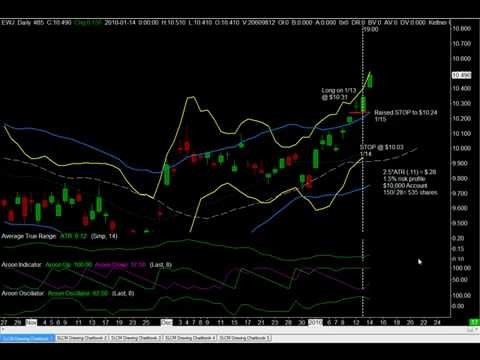Trend Following Tips for ETF Investors (SPY SLV)
Post on: 29 Март, 2015 No Comment

The return of volatility in 2014 has prompted a renewed interest in active management strategies to manage risk and enhance returns. One such method involves following the historical trends of the market as guideposts for buy and sell decisions. This approach to technical analysis is known by many as the art of “trend following”, which is widely adopted by both professional and retail investors. (For more, see: 6 Dangerous Moves For First-Time Investors .)
Simple moving averages are typically favored indicators of trend followers. This involves selecting a number of days or weeks and then averaging the corresponding prices of a stock or index over that time frame. Common moving averages found in most charting services are the 50-day moving average (short term) and 200-day moving average (long-term).
Successful trend followers are able to define their investment time horizon in order to help make prudent investment decisions. Investors that can tolerate wider fluctuations and less trading are wise to select a longer term moving average as their corresponding trigger. Conversely, those interested in aggressive entry and exit points will likely stick with a narrower range. (For more, see: Trend Traders .)
ETFs make excellent tools for trend following because they generally track an established basket of securities with daily liquidity. The SPDR S&P 500 ETF (SPY ) is generally a favored large-cap index because of its longevity and well-known underlying holdings.
Recently SPY pierced below its 200-day simple moving average, a feat which it hadn’t accomplished in nearly two years. As a result, investors that follow a timing model using this long-term indicator have likely reduced their exposure to stocks and increased holdings in cash or other defensive areas.
If they adhere to a disciplined investment approach, they will likely be moving back into stocks when SPY moves back above this trendline. While this approach is subject to quick whipsaws like we witnessed in October, it also can keep you out of the market during pernicious declines such as we experienced during the financial crisis of 2008.
Another important visual for trend followers to analyze is the slope of the moving average. A rising trendline will indicate that a particular stock or index has been in a positive price channel for quite some time. Conversely, a falling trend line will indicate that months or years of price history has been showing consistently negative returns. A chart of the iShares Silver Trust (SLV ) shows falling short and long-term moving averages as a result of persistent multi-year declines.
Furthermore, a flat trend line may indicate indecisive price action that results in whipsaws above and below the primary indicator. This can result in poor directional signals and false breakouts that hinder the success of this methodology.
Like any method of timing the stock market, trend following has benefits and pitfalls that must be weighed before implementing an active strategy. Advocates of trend following will point out that these guides will not get you in at the bottom or out at the top, however they will provide salient opportunities to manage downside risk during adverse circumstances. The same trend lines can be used to initiate buying signals to specific areas of the market that you may not have exposure to as well.
Disclosure: At the time this article was published, principals and clients of FMD Capital Management held no positions in securities mentioned in this article.














